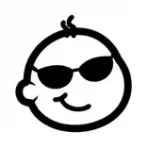Ever scrolled through your DMs or TikTok comments and wondered, “Wait, what does mood mean in slang?” If you’ve seen someone drop “mood” after a tweet, pic, or video and thought it was just random internet speak, buckle up! This phrase is basically shorthand for “I relate to this”, and it’s become a go-to for expressing vibes and feelings online. So, grab your phone, and let’s dive into what makes “mood” one of the most hilarious and versatile slang words right now 📲😂.
The Origin of “Mood” in Slang
It’s wild to think “mood” was once just a simple noun meaning a state of mind or feeling. But in meme culture and social media, words like this get a remix. Around the mid-2010s, especially on platforms like Tumblr and Twitter, people started saying “mood” as a quick way of saying “That’s so me” or “I’m feeling that.”
Imagine you see a pic of a guy taking an eternal nap, and you comment “mood” to say, “Yep, same energy.” It’s short, punchy, and nails the emotional connection in a snap. From text posts to reaction pics, “mood” became the go-to reaction for anything relatable.
How to Use “Mood” in Everyday Chats
Using “mood” is as casual as it gets. You throw it in when something perfectly sums up your vibe. Here are a few ways to slide it into your convos:
- Reacting to relatable posts:
Friend shares a pic of their bed all cozy at 3 PM? Reply with just “Mood.” - Answering texts:
Someone says, “I want pizza for breakfast.” You hit back with “Mood.” - Captioning photos:
Post a selfie with a messy bun and tired eyes? Caption it “Mood.”
Here’s a classic DM snippet to make it crystal clear:
Friend 1: “Can’t believe Monday is here already…”
Friend 2: “Mood.”
Simple, right? It’s like saying, “I totally get it!” without the extra typing.
The Funniest Ways “Mood” Pops Up Online
If there’s one place “mood” shines, it’s on Twitter, Instagram, and TikTok comments where users pair it with the most random pics and videos. It’s basically become a meme staple, used to caption everything from grumpy cats to sad vegetables 🥦😭.
Some hilarious examples include:
- A cat sprawled across a keyboard with the caption: “Mood.” (Same, fluffy friend, same.)
- A viral meme of a guy lying facedown on a park bench with “Mood” underneath. Because who isn’t just DONE sometimes?
- Someone posting a messy kitchen with “Mood”—a shoutout to all of us avoiding cleaning.
Basically, “mood” instantly turns any pic or post into a relatable moment. It’s the internet’s way of saying, “Yep, that’s how I feel too.”
Quick Do’s and Don’ts When Using “Mood”
- Do use “mood” to express agreement or empathy with an emotional vibe.
- Do keep it casual — it’s slang, so save it for informal chats.
- Don’t overuse it in the same convo; it loses impact if you spam “mood” everywhere.
- Don’t use “mood” as a filler word—make sure it actually vibes with your feelings.
- Do pair it with funny or relatable images for max effect.
Basically, “mood” works best when it feels natural and instantly relatable. Otherwise, it can come off as lazy or confusing.
Why Does “Mood” Hit Different?
The magic of “mood” is in its simplicity. It’s like your go-to emoji that says, “I feel this.” No need for long explanations, just a single word captures all the feels. Plus, it’s versatile—you can use “mood” for good vibes, bad vibes, tired vibes… literally any vibe.
So next time your friend texts you about a rough day or you stumble on a picture that screams your current feeling, drop a quick “mood.” Trust me, you’ll sound like a pro in no time.
Now, don’t hesitate to whip out “mood” in your group chats and social feeds. It’s the little flash of shared understanding that the internet absolutely thrives on 🌟.
Got it? Great! Just remember: when you see something that matches your feels perfectly, type one word and let the internet know—”Mood.”
